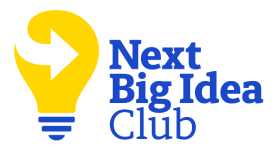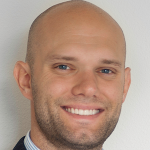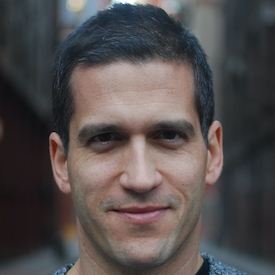Dr. Natalie Nixon is the CEO of Figure 8 Thinking, a creativity and foresight strategy firm. As an advisor, she helps leaders connect the dots between creativity and business results. She was listed on the “Top 50 Keynote Speakers In The World” list for 2022 by Real Leaders.
What’s the big idea?
What if our most productive selves aren’t when we’re on Zoom calls or churning through emails, but when we give ourselves the space and the time to move, think, and rest? Move. Think. Rest. outlines a compelling new framework for work in the 21st century. One that replaces slowly dying of burnout at your desk with a productivity routine that makes downtime a must-have.
Below, Natalie shares five key insights from her new book, Move. Think. Rest.: Redefining Productivity & Our Relationship with Time. Listen to the audio version—read by Natalie herself—below, or in the Next Big Idea App.

1. The MTR framework gets you to your new human operating system.
The MTR framework—pronounced “motor”—is an acronym for move, think, and rest. It isn’t just another productivity hack; it’s a research-backed philosophy that serves as a powerful antidote to hustle culture and unprecedented burnout.
The MTR framework fundamentally challenges the outdated belief that movement, reflection, and rest are counterproductive to getting work done. Instead, it positions the incorporation of all three as essential ingredients for strategic creativity and sustainable success. When you move, think, and rest, you activate the two most fundamental elements of creativity: wonder and rigor.
I interviewed over 60 people for this book, including Ivy Ross, Chief Design Officer at Google. Ivy told me about a practice that perfectly embodies MTR in the thinking dimension. During the COVID-19 pandemic, when her team was overwhelmed by uncertainty, she facilitated an exercise where team members created fairy tales about the future. This helped them suspend judgment about how heavy and burdensome the pandemic felt.
This is MTR in action: using creative thinking (curiosity, imagination, dreaming, discipline, and technique) to move beyond traditional problem-solving. Ivy also organizes off-site trips where her team leaves their job titles back at the corporate office and, for example, visits a farm where they become beekeepers or flower pickers for the day. Time seems to stand still, and when they return to the office, they bring fresh perspective and renewed energy back to their work.
The MTR framework emphasizes that true productivity comes from allowing space to reset and nurture the workplace’s most vital assets of mental health, imagination, and capacity to grow. This integrated approach enables flourishing in our modern world.
2. Shift focus from productivity to cultivation.
MTR provokes a fundamental shift from traditional, quantitative productivity metrics that focus solely on outputs and speed to one of cultivation. This isn’t just semantic wordplay—it’s a complete reframing of how we approach work and success. Cultivation embraces a both/and paradigm:
- It values both the individual and the collective.
- It honors both quick growth spurts and slow, steady shifts.
- It acknowledges both the work output, which is dormant and percolating beneath the surface, and the work outputs we can visibly measure.
Angela Val, CEO of Visit Philadelphia, told me, “I would rather be a company that does a few things really well than 100 things kind of so-so. That means we have to make room for other new projects, new ideas. The only way to do that is to evaluate both the new ideas that people are suggesting and also evaluate the work that we currently do every so often.”
This cultivation approach values what is emerging beyond tangible products, encompassing financial, social, experiential, and cultural value. It’s about bringing the entirety of human potential to work, where productivity becomes a byproduct of a more expansive state of well-being.
Flourishing is a distinctive way to think about what comes from cultivating our work. It means blooming and blossoming in bold, colorful directions, and sometimes retreating into bud form when necessary. Think of it like a garden, where sometimes plants need to go dormant or be pruned in order to emerge stronger in the next season.
I’ve seen this play out in organizations that have implemented new KPIs for what I call the Imagination Era. Instead of just measuring inventory turnover or cost per lead, they’re also adding indicators like time allocated for strategic thinking, frequency of cross-departmental collaboration, and employee engagement in prototyping and creative problem-solving activities.
3. Embrace play and liminal spaces as catalysts for innovation.
Play is the original MTR activity, a powerful energy generator that fuels creativity, resilience, and connection. As part of my research, I visited Brendan Boyle’s class on play at Stanford University’s d.school. Brendan is a toy designer and consults companies on the business advantages of integrating play. He defines play as engagement that is intrinsically motivated, purposeless, enjoyable, and involves a suspension of self-consciousness. Play is a vital tool for dealing with uncertainty and stimulating innovation.
But here’s what’s fascinating: play often happens in liminal spaces, meaning those ambiguous, in-between times and environments where creativity thrives. These are undefined, transitional periods, such as daydreaming, micro-retreats, or those moments when you’re half-awake in the morning.
“Observations during my “procrastination” moments often led to the most insightful passages in my book.”
2023 research from MIT on “Targeted Dream Incubation” underscores the power of these liminal states. The study found that participants who received specific task prompts before napping produced more creative stories and performed better on divergent thinking tasks, compared to those who napped without receiving prompts or who stayed awake. I experienced this firsthand during my writing sabbatical in Miami Beach to write this very book. I was observing a young woman giving a Pilates class from her laptop while sitting cross-legged, outside under palm trees—a perfect example of how the boundaries between work and life are blurring in creative ways. These observations during my “procrastination” moments often led to the most insightful passages in my book.
Companies are beginning to recognize this. Take FLOWN, an online community that creates virtual co-working sessions designed to minimize distractions and maximize deep work. They’ve found that by intentionally creating liminal spaces—quiet, focused environments—people achieve breakthrough thinking that wouldn’t happen in traditional office settings.
4. Activate MTR in your life and organization.
The beauty of MTR is that it’s scalable. Whether you’re an individual contributor, team leader, or running an organization, these principles can be integrated at every level.
For individuals, it might be as simple as taking walking meetings, practicing what I call “micro-dosing movement” throughout your day, or protecting time for 90-second daydream breaks for what appears to be unproductive thinking but actually seeds an innovative idea.
For teams, consider regularly implementing creative breaks where groups step away from their immediate tasks to engage in seemingly unrelated activities. Spotify does this through their squad model, where teams regularly rotate members and share learnings across different projects. And Publicis’ Le Truc, an internal creativity catalyst, has designed its physical space to enable teams to meet in diverse areas, with serendipity in mind, to spark new thinking.
For organizations, it’s about creating systematic support for MTR activities. This might include offering sabbaticals. Tech companies like Meta provide these extended breaks after five years of service. Or implementing what I call “apprenticeship models” where knowledge flows both up and down the organizational hierarchy.
“AI can serve as a thinking partner, helping us frame more effective questions and explore ideas from new perspectives.”
Now here’s something crucial: MTR is not anti-technology. It’s about developing a more intentional relationship with the tech tools that surround us to enhance our thinking processes. AI can serve as a thinking partner, helping us frame more effective questions and explore ideas from new perspectives. Apps like Freedom or Forest can help minimize distractions during focused work periods. Digital mind-mapping tools can help us organize thoughts more effectively.
The key is remembering that the “I” in AI stands for intelligence—but you’re still in charge of your own imagination. We need not only big data—the bird’s eye view—but also what I call deep data: the worm’s eye view insights that come from exploratory observations, interpersonal interactions, and story.
5. Let’s look ahead.
We’re at a perfect inflection point in history. We have an unprecedented opportunity to evolve the ways we view work and productivity. We’re not just experiencing a technology revolution. We’re in the midst of a human revolution.
The organizations and individuals who will thrive in this Imagination Era are those who understand that creativity is a must-have for navigating uncertainty, driving innovation, and creating meaningful value.
MTR gives us a framework for accessing our unique human capacity for innovation. It helps us build career resilience, prevent burnout, and create space for the strategic thinking that leads to breakthrough solutions.
The goal is to unlock your full potential and cultivate a more meaningful work life. When you move, think, and rest, you’re not procrastinating. You’re accessing the most human parts of yourself that can’t be automated or replicated by technology.
Enjoy our full library of Book Bites—read by the authors!—in the Next Big Idea App:
































